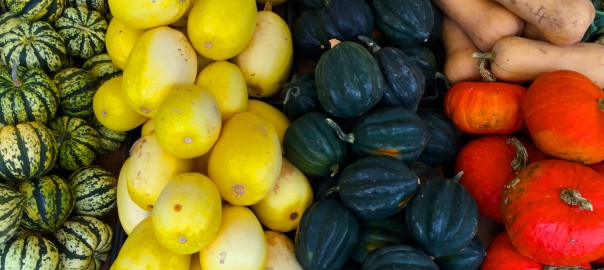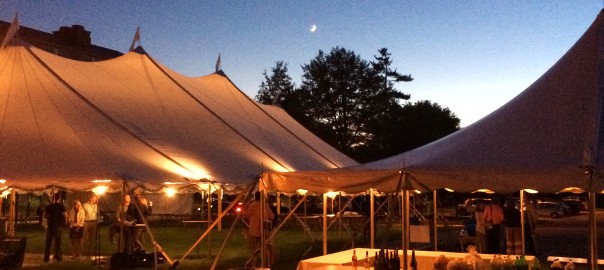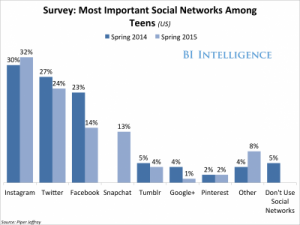We’re getting this week’s Next to Now out a little early so you can focus the rest of the week on family, friends, food, and giving thanks.
A STORY ABOUT HUMAN GENEROSITY (AND AD TARGETING)
This is first of all a moving story about a person in need reaching out and another person responding. But, in the context of this blog of marketing links, it’s also a reminder that serendipity in advertising can sometimes deliver results more powerfully than the acutest targeting.
#targeting
MARKETERS SAY OTHER PEOPLE’S EMAILS WASTE THEIR TIME
An eMarketer survey reveals that U.S. marketers find excessive emails are tied with wasteful meetings for the biggest thing that’s getting in the way of doing their work. No comment on their own fondness for sending emails as a successful marketing tactic.
#email
SNAPCHAT’S AD BUSINESS IN TROUBLE
That is, it’s in trouble given its $16 billion valuation:
“Snapchat lost more than $128 million in the first 11 months of 2014, according to a financial statement leaked earlier this year, which also showed Snapchat had revenue of $3.1 million. Its advertising business began in mid-October. Tech media outlet Re/code estimated that Snapchat’s revenue could reach $50 million in 2015.”
Snapchat CEO Evan Spiegel has stated that he is not in favor of hyper-targeting his users with ads, but that might have to change if he wants to make good on the promise investors saw in his company.
…which may be a reason there are signs that Snapchat’s loosening up its data restrictions.
#snapchat #social
SERIAL PODCAST ON PANDORA
Streaming successful podcasts such as Serial on Pandora has a major advantage for advertisers over downloading—with streaming we can see click throughs and collect data. With downloaded podcasts, the ads have no ability to click through. If you were hoping to advertise on Serial through Pandora, however, you’ll have to wait until next year: Warner Brothers and Esurance have locked up the slots for Seasons 1 and 2.
#podcast #streaming #pandora
BILL SIMMONS
Is it a coincidence that the acronym for the Bill Simmons Podcast Network from ex-ESPN gadfly Bill Simmons is BSPN?
#podcast
GAWKER SHIFTS AGAIN
Once the shining star of internet snarkiness, Gawker has been publically wrestling with its own identity a lot recently. Their new turn is to politics. We’ll see if the grande dame of snark can pull it off.
#gawker
WHAT’S BETTER FOR VIDEO ADS, FACEBOOK OR YOUTUBE?
A study by Reebok compared the same video buy across Facebook and YouTube–comparing cost, view-throughs, and engagement rates. The results seemed to favor YouTube, but suggested a combination by might be better still:
“The results showed that combining YouTube and Facebook buys is the most effective method for marketers. Reebok shared the data during Adweek’s Executive Lab, which was sponsored by Pixability, in New York on Thursday.
YouTube had a higher video view rate (23.6 percent of people who scrolled past the video viewed it versus Facebook’s 5.4 percent) and video completion rate (20.4 percent versus Facebook’s 4.5 percent) as well as a lower cost per view. But Facebook had higher engagement.”
#video #facebook #youtube
THE FIRST VR ADS HIT FACEBOOK
Facebook puts that $2B purchase of Oculus Rift to work with a first look at virtual reality ads for brands such as AT&T, Nestle, Mondelez, and Samsung.
#vr #facebook
ARE GIFS THE FUTURE OF ADVERTISING?
No, but they’re a great way to get attention right now—especially if you have a video-based phenomenon to market that has lots of moments you can edit, share, and plug into a gif search engine under “YOLO,” “What’s up,” or “OMFG.” The money quote comes from Riffsy CEO David MacIntosh”:
“Three to five seconds is the new three to five minutes.”
#creative
CATS ON MOTOBIKES
You’d think IAMS marketers would have it easy: cute cat and dog .gifs all day long. Turns out they’re not just churning the content out, but thinking carefully of editing spots to work differently on different media. A cute cat video for TV needs to run differently than a cute cat video on Facebook. Same shoot, different edit.
#video #facebook #cats








